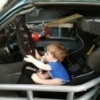Nice. I'll refrain from any smarta** EE remarks  . I wish it were just me being lazy and not looking at the board and wiring diagrams in detail. Every pin (1A-1V and 2A-2Z) is present and soldered to the board. The only pins a M/T ECU would not have that a A/T would are 2M and 2Z. The only pin the M/T would have that a A/T would not is 2L. The problem is, all three of these pins are soldered to the bored and appear to be connected to an actaul pathway on the board, not just a dead end. I tried taking pics for you, but its too hard to make out. You stated earlier that the boards are the same for the two transmissions. Is it then just a software/firmware difference between the two.
. I wish it were just me being lazy and not looking at the board and wiring diagrams in detail. Every pin (1A-1V and 2A-2Z) is present and soldered to the board. The only pins a M/T ECU would not have that a A/T would are 2M and 2Z. The only pin the M/T would have that a A/T would not is 2L. The problem is, all three of these pins are soldered to the bored and appear to be connected to an actaul pathway on the board, not just a dead end. I tried taking pics for you, but its too hard to make out. You stated earlier that the boards are the same for the two transmissions. Is it then just a software/firmware difference between the two.
If you can acheive the same AFR with the M/T computer and tuning the AFM, why did people use this cheat, or was it not always legal in SM to tune the AFM?
It appears that both the M/T and A/T have an idle switch in the TPS, which explains why the engine idle changed when I unplug it. What the ECU is not getting is the WOT signal. If it were a A/T ECU you could jump 2M to 2D (ground) and make it think the trottle is shut all the time, or jump 2M to 2K, making it think it is at WOT all the time. That might still throw a code, since the idle switch could be active and the potentiometer is saying it is at WOT. What does the engine use the WOT signal for?
-Marc
Hee hee, I wasn't trying entirely to be a smartass, I didn't remember the pin names or have the wiring diagrams and pics in front of me. Something isn't adding up - all of the pins should not be going to an active trace - there will be a void somewhere, but it may be one step away from where the connector pins ("header") solders to the board).
Same board, yes, but a different PROM in addition to the difference in the TPS wiring.
The cheat gave more area under the curve, especially torque - with a truly properly tuned AFM, you could get the same effect, but it still seems today that few know how to properly tune the AFM (and, worse, some of the AFPR purveyors are wrongly claiming that an AFPR will give you everything a tuned AFM will - dead false, particularly for high-flow/high-power setups above 116 Dynojet HP).
Similarly, the mechanical TPS adjustment will have no effect on your WOT dyno curve - if it does, it is a good sign your AFM tune is in the weeds.
The engine uses the WOT signal for low-RPM/high-load operation, i.e. nothing we care about- the 1.6 fuel and timing map is driven almost entirely by the AFM and the RPM.
Somewhere I have pics of the pins and how to detect a B64J dressed up as a B61P - I sent them to NASA and SCCA Tech long ago, but that was several computer crashes ago, I don't think I still have the pics.




 Sign In
Sign In Create Account
Create Account





 Back to top
Back to top Report
Report


















